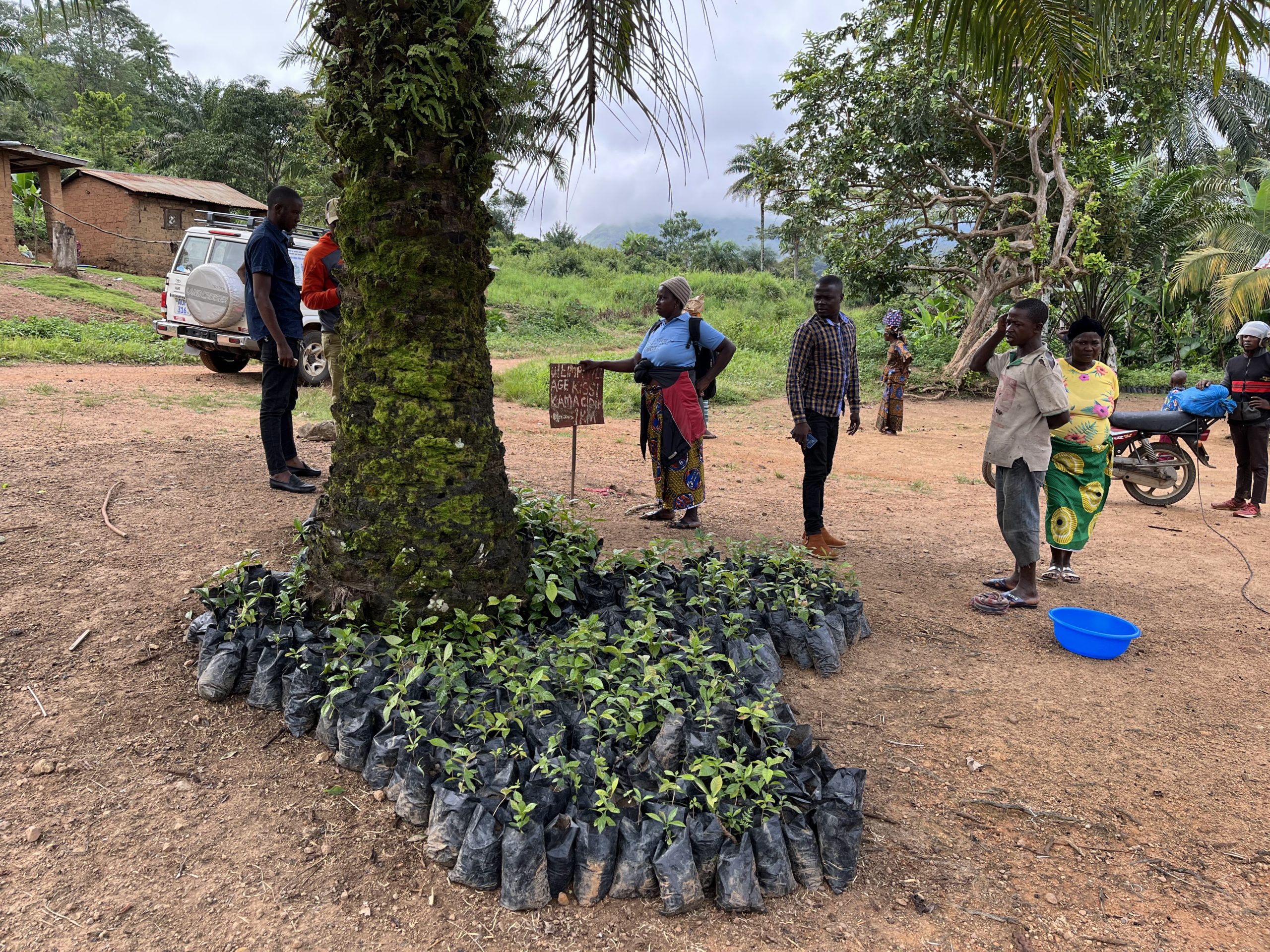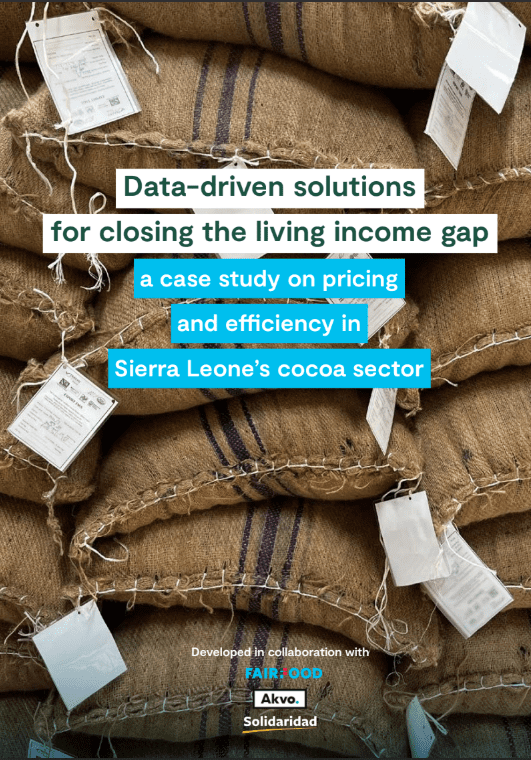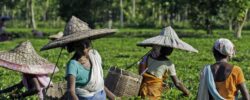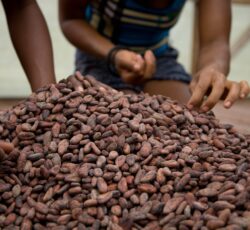An assessment of living income prices and costs hindering cocoa farmers to thrive in Sierra Leone
Sierra Leone’s cocoa sector stands at a crossroads. Long overlooked, it is now attracting renewed attention from both government and international buyers as a potential driver of rural livelihoods and sustainable export growth. Yet, beneath this promise lies a persistent challenge: most cocoa farmers are still unable to earn a living income.
Fairfood, in collaboration with Solidaridad West Africa, under the RECLAIM Sustainability! programme, has released a new case study — “Data-driving solutions for closing the living income gap: a case study on pricing and efficiency in the Sierra Leone’s cocoa sector” — that offers the most detailed look yet at farmer realities across five key cocoa-producing districts.
Jump to the case studyApplying Fairfood’s Living Income Price (LIP) methodology and a Cost–Yield Efficiency (CYE) assessment to profile different farmer groups, this study was made possible thanks to recent efforts around living incomes in the country initiated by KIT and the IF, which led by the definition of a living income benchmark. The new study goes beyond it to reveal a sector characterised by low-cost, low-yield production and wide disparities across farmer segments. While certified and more efficient farmers are closer to economic viability, which is expected, most remain trapped in cycles of underperformance and under-compensation, justified by small land sizes or underinvestments.
Still, there are strong foundations for progress. Most farmers already operate low-input systems that are inherently climate-resilient — a solid base for sustainable intensification. And as demand for sustainably sourced cocoa grows, Sierra Leone has a unique opportunity to ensure that the success of the global chocolate industry is reflected in thriving rural communities.
Key highlights from the study:
- Certification matters: Certified farmers consistently achieve higher yields and efficiency, converting similar input costs into better results.
- Productivity is decisive: Low yields — not high costs — are the main barrier to living incomes.
- Costs are already minimal: Further cost-cutting risks underinvestment and lower resilience.
- Diversification builds stability: Complementary income sources, especially for low-yield farmers, strengthen household resilience.
- Segment-specific strategies are essential: A one-size-fits-all approach won’t work, interventions must reflect local realities and include the laggers.
The findings point to a clear conclusion: price alone cannot close the income gap. True progress requires combining fair pricing with productivity, cost-efficiency, and diversification strategies, all guided by reliable, farm-level data.
This study was recently validated by the Sierra Leonean Ministry of Agriculture Produce Monitoring Board. As Raymond Bob Katta, Executive Chairman of the Produce Monitoring Board, notes, “Ensuring fair, sustainable, and inclusive incomes for smallholder farmers speaks to business efficiency as much as it does of a rights-based approach to doing business.”

The valuable information in this report makes it a necessary tool that any actor who desires to succeed in the agri-commerce subsector must use as a blueprint if there is a focus on closing the living income gap in a developing country with rich potentials such as Sierra Leone.
In case you’ve missed it…
Fairfood, Akvo, and Heifer International have been working together to develop a methodology that moves beyond traditional benchmarks and proxies to assess and act on living income. This methodology combines contextual data with actionable insights, equipping stakeholders across supply chains to identify living income gaps to measure impact and make informed pricing decisions.
The first application of this methodology was a case study from Honduras, which illustrated how contextual data can inform a living income strategy that is measurable and directly applicable in practice – you can read about it here. The methodology is already informing initiatives in Uganda, Ghana, and India. This work is made possible by the RECLAIM Sustainability! programme, in which Fairfood led to innovation experiments to fair value distribution and sustainable livelihoods. By sharing this case studies, we aim to provide a starting point for anyone working in the living income space — whether you’re looking to integrate living income into your own programmes, or make it part of your organization’s mission.
For those who want to explore the methodology further, our Farmer Income Data Toolkit is now available. This open-source tool allows organisations to collect and analyse income data, track impact, and start meaningful conversations about fair pricing across supply chains.



